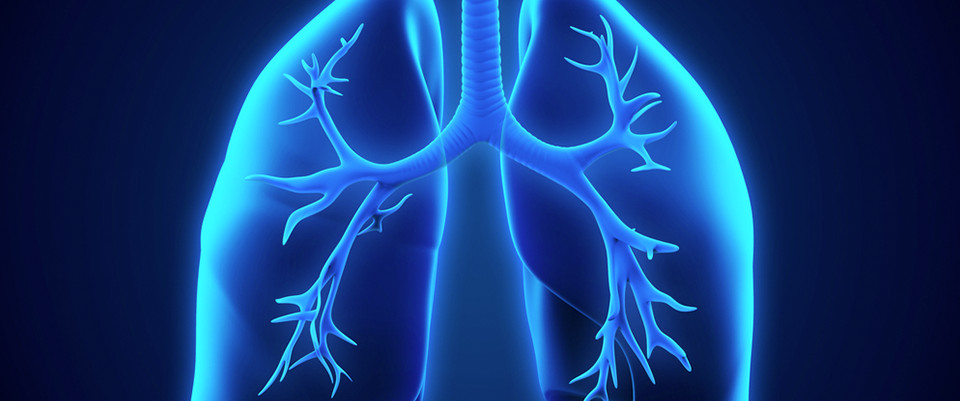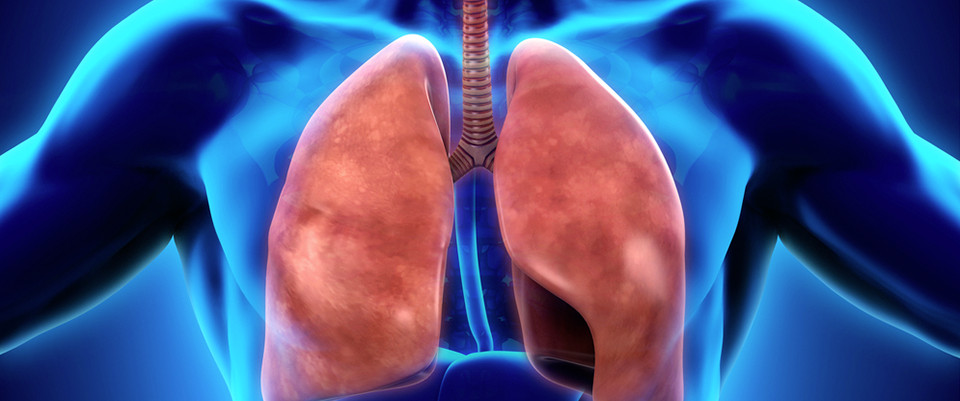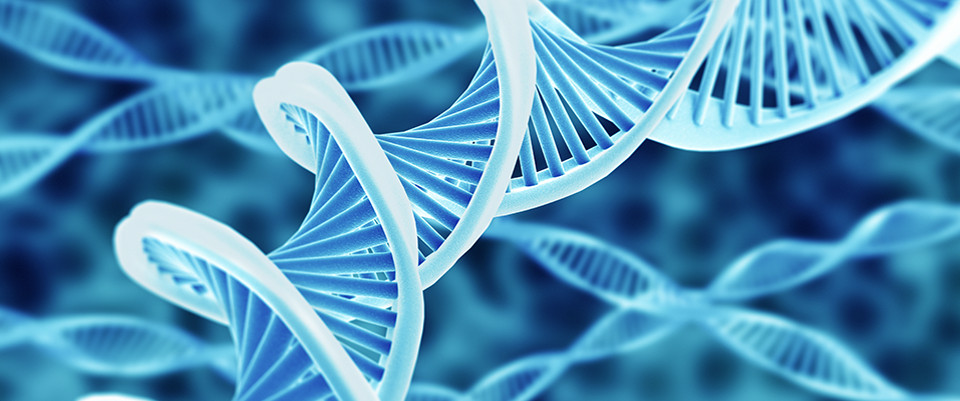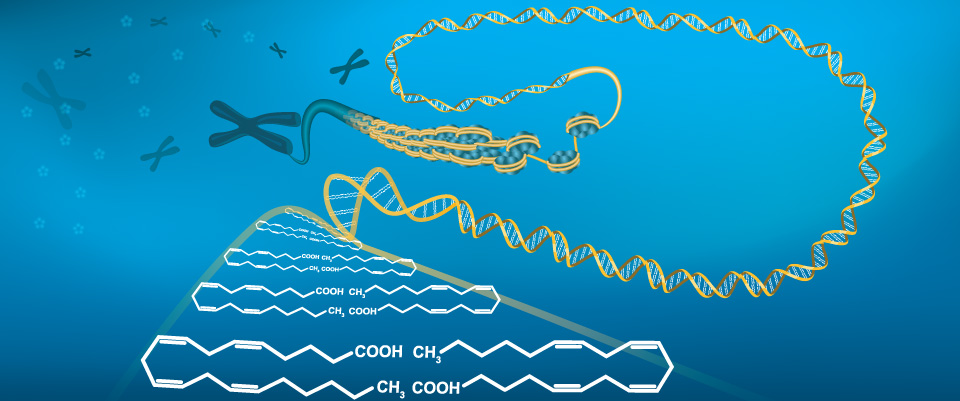PubMed
metabolomics; +21 new citations
21 new pubmed citations were retrieved for your search.
Click on the search hyperlink below to display the complete search results:
metabolomics
These pubmed results were generated on 2015/06/24PubMed comprises more than 24 million citations for biomedical literature from MEDLINE, life science journals, and online books.
Citations may include links to full-text content from PubMed Central and publisher web sites.
Another small molecule in the oncometabolite mix: L-2-Hydroxyglutarate in kidney cancer.
Related Articles
Another small molecule in the oncometabolite mix: L-2-Hydroxyglutarate in kidney cancer.
Oncoscience. 2015;2(5):483-486
Authors: Shim EH, Sudarshan S
Abstract
Alterations in metabolism are now considered a hallmark of cancer. One of the clearest links between metabolism and malignancy are oncometabolites. To date, several putative oncometabolites with transforming properties have been identified in the context of tumors due to both gain and loss of function mutations in genes encoding enzymes of intermediary metabolism. Through an unbiased metabolomics approach, we identified elevations of the metabolite 2-hydroxyglutarate (2-HG) in the most common histology of kidney cancer that is among the most common malignancies in both men and women. Subsequent analyses demonstrate that the predominant enantiomer of 2-HG elevated in renal cancer is the L(S) form. Notably, elevations of L-2HG are due in part to loss of expression of the L-2HG dehydrogenase (L2HGDH) which normally serves as an enzyme of "metabolite repair" to keep levels of this metabolite from accumulating. Lowering L-2HG levels in RCC through re-expression of L2HGDH mitigates tumor phenotypes and reverses epigenetic alterations known to be targeted by oncometabolites. These data add to the growing body of evidence that metabolites, similarly to oncogenes and oncoproteins, can play a role in tumor development and/or progression. As such, they represent a unique opportunity to utilize these findings in the clinic setting.
PMID: 26097881 [PubMed - as supplied by publisher]
Metabolomic profiling of Burkholderia pseudomallei using UHPLC-ESI-Q-TOF-MS reveals specific biomarkers including 4-methyl-5-thiazoleethanol and unique thiamine degradation pathway.
Related Articles
Metabolomic profiling of Burkholderia pseudomallei using UHPLC-ESI-Q-TOF-MS reveals specific biomarkers including 4-methyl-5-thiazoleethanol and unique thiamine degradation pathway.
Cell Biosci. 2015;5:26
Authors: Lau SK, Lam CW, Curreem SO, Lee KC, Chow WN, Lau CC, Sridhar S, Wong SC, Martelli P, Hui SW, Yuen KY, Woo PC
Abstract
BACKGROUND: Burkholderia pseudomallei is an emerging pathogen that causes melioidosis, a serious and potentially fatal disease which requires prolonged antibiotics to prevent relapse. However, diagnosis of melioidosis can be difficult, especially in culture-negative cases. While metabolomics represents an uprising tool for studying infectious diseases, there were no reports on its applications to B. pseudomallei. To search for potential specific biomarkers, we compared the metabolomics profiles of culture supernatants of B. pseudomallei (15 strains), B. thailandensis (3 strains), B. cepacia complex (14 strains), P. aeruginosa (4 strains) and E. coli (3 strains), using ultra-high performance liquid chromatography-electrospray ionization-quadruple time-of-flight mass spectrometry (UHPLC-ESI-Q-TOF-MS). Multi- and univariate analyses were used to identify specific metabolites in B. pseudomallei.
RESULTS: Principal component and partial-least squares discrimination analysis readily distinguished the metabolomes between B. pseudomallei and other bacterial species. Using multi-variate and univariate analysis, eight metabolites with significantly higher levels in B. pseudomallei were identified. Three of the eight metabolites were identified by MS/MS, while five metabolites were unidentified against database matching, suggesting that they may be potentially novel compounds. One metabolite, m/z 144.048, was identified as 4-methyl-5-thiazoleethanol, a degradation product of thiamine (vitamin B1), with molecular formula C6H9NOS by database searches and confirmed by MS/MS using commercially available authentic chemical standard. Two metabolites, m/z 512.282 and m/z 542.2921, were identified as tetrapeptides, Ile-His-Lys-Asp with molecular formula C22H37N7O7 and Pro-Arg-Arg-Asn with molecular formula C21H39N11O6, respectively. To investigate the high levels of 4-methyl-5-thiazoleethanol in B. pseudomallei, we compared the thiamine degradation pathways encoded in genomes of B. pseudomallei and B. thailandensis. While both B. pseudomallei and B. thailandensis possess thiaminase I which catalyzes degradation of thiamine to 4-methyl-5-thiazoleethanol, thiM, which encodes hydroxyethylthiazole kinase responsible for degradation of 4-methyl-5-thiazoleethanol, is present and expressed in B. thailandensis as detected by PCR/RT-PCR, but absent or not expressed in all B. pseudomallei strains. This suggests that the high 4-methyl-5-thiazoleethanol level in B. pseudomallei is likely due to the absence of hydroxyethylthiazole kinase and hence reduced downstream degradation.
CONCLUSION: Eight novel biomarkers, including 4-methyl-5-thiazoleethanol and two tetrapeptides, were identified in the culture supernatant of B. pseudomallei.
PMID: 26097677 [PubMed - as supplied by publisher]
Salmonella typhimurium and Escherichia coli dissimilarity: Closely related bacteria with distinct metabolic profiles.
Related Articles
Salmonella typhimurium and Escherichia coli dissimilarity: Closely related bacteria with distinct metabolic profiles.
Biotechnol Prog. 2015 Jun 22;
Authors: Sargo CR, Campani Junior G, Silva GG, Correia DM, Giordano RC, Ferreira EC, Rocha I, da Silva AJ, Zangirolami TC
Abstract
Live attenuated strains of Salmonella typhimurium have been extensively investigated as vaccines for a number of infectious diseases. However, there is still little information available concerning aspects of their metabolism. S. typhimurium and Escherichia coli show a high degree of similarity in terms of their genome contents and metabolic networks. However, this work presents experimental evidence showing that significant differences exist in their abilities to direct carbon fluxes to biomass and energy production. It is important to study the metabolism of Salmonella in order to elucidate the formation of acetate and other metabolites involved in optimizing the production of biomass, essential for the development of recombinant vaccines. The metabolism of Salmonella under aerobic conditions was assessed using continuous cultures performed at dilution rates ranging from 0.1 to 0.67 h(-1) , with glucose as main substrate. Acetate assimilation and glucose metabolism under anaerobic conditions were also investigated using batch cultures. Chemostat cultivations showed deviation of carbon towards acetate formation, starting at dilution rates above 0.1 h(-1) . This differed from previous findings for E. coli, where acetate accumulation was only detected at dilution rates exceeding 0.4 h(-1) , and was due to the lower rate of acetate assimilation by S. typhimurium under aerobic conditions. Under anaerobic conditions, both microorganisms mainly produced ethanol, acetate, and formate. A genome-scale metabolic model, reconstructed for Salmonella based on an E. coli model, provided a poor description of the mixed fermentation pattern observed during Salmonella cultures, reinforcing the different patterns of carbon utilization exhibited by these closely related bacteria. This article is protected by copyright. All rights reserved.
PMID: 26097206 [PubMed - as supplied by publisher]
ERβ localization influenced outcomes of EGFR-TKI treatment in NSCLC patients with EGFR mutations.
Related Articles
ERβ localization influenced outcomes of EGFR-TKI treatment in NSCLC patients with EGFR mutations.
Sci Rep. 2015;5:11392
Authors: Wang Z, Li Z, Ding X, Shen Z, Liu Z, An T, Duan J, Zhong J, Wu M, Zhao J, Zhuo M, Wang Y, Wang S, Sun Y, Bai H, Wang J
Abstract
Effects of estrogen receptorβ (ERβ) localization on epidermal growth factor receptor tyrosine kinase inhibitors (EGFR-TKIs) in advanced non-small cell lung cancer (NSCLC) are unknown. First, we analyzed the relationship between ERβ localization determined by immunohistochemistry and EGFR-TKI outcomes in 184 patients with advanced NSCLC and found that ERβ expression localized in the cytoplasm and/or nucleus. The frequency of cytoplasmic ERβ (c-ERβ) and nuclear ERβ (n-ERβ) co-expression was 12% (22/184). C-ERβ and n-ERβ co-expression was correlated with poor median progression-free survival compared to patients without co-expression. In subsequent in vitro experiments, PC9 cells transfected with ERβ isoform1 (ERβ1, strong expression of both c-ERβ and n-ERβ) were more resistant to gefitinib than PC9 cells transfected with ERβ isoform2 or 5 (ERβ2 or ERβ5, strong expression of ERβ in cytoplasm but not nucleus). Resistance was identified due to interactions between ERβ1 and other isoforms, and mediated by activation of non-genomic pathways. Moreover, gefitinib resistance was reversed by a combination treatment with gefitinib and fulvestrant, both in cell lines and in one NSCLC patient. These results suggested that c-ERβ and n-ERβ co-expression was a potential molecular indicator of EGFR-TKI resistance, which might be overcome by combining EGFR-TKI and ER antagonist.
PMID: 26096604 [PubMed - as supplied by publisher]
Enhancing detection coverage in untargeted metabolomics analysis by solid-phase extraction on-line coupled to LC-MS/MS.
Related Articles
Enhancing detection coverage in untargeted metabolomics analysis by solid-phase extraction on-line coupled to LC-MS/MS.
Electrophoresis. 2015 Jun 19;
Authors: Calderón-Santiago M, Priego-Capote F, de Castro MD
Abstract
One of the main limitations of untargeted metabolomics analysis is the low detection coverage of analytical techniques such as NMR, LC-MS or GC-MS. In this research, the detection coverage of an automated approach configured by the on-line coupling of solid-phase extraction (SPE) to LC-MS/MS was evaluated by combination of sorbents based on different retention mechanisms. The approach was applied to the analysis of human serum using three types of sorbents: alkyl bonded silica, polymeric resins and mixed-mode ionic resins. The combination of four sorbents (C18, a modified polystyrene-divinylbenzene resin and two mixed-mode ionic resins) led to the best extraction results and, therefore, the best detection coverage, which is explained by their complementary retention mechanisms. However, some of the sorbents provide a high detection coverage by themselves, as is the case with C18, which can afford to retain almost 83% of all detected entities. Taking into account the complementarity between pairs of these sorbents (C18 and the polystyrene-divinylbenzene resin with the mixed-mode ionic resins), dual cartridge SPE-LC-MS/MS configurations were designed for serum analysis. These configurations allowed increasing the detection coverage up to 91% of the total number of molecular features detected with all sorbents tested. An additional benefit of the SPE-LC-MS/MS strategy was the improvement of sensitivity as compared to protein precipitation and fractionation with methanol and chloroform. Thus, an average preconcentration factor of 10-75 was obtained in the SPE-based approach versus the two-phase protocol for metabolites extraction. This article is protected by copyright. All rights reserved.
PMID: 26095740 [PubMed - as supplied by publisher]
Epigenome-wide association of DNA methylation markers in peripheral blood from Indian Asians and Europeans with incident type 2 diabetes: a nested case-control study.
Related Articles
Epigenome-wide association of DNA methylation markers in peripheral blood from Indian Asians and Europeans with incident type 2 diabetes: a nested case-control study.
Lancet Diabetes Endocrinol. 2015 Jun 18;
Authors: Chambers JC, Loh M, Lehne B, Drong A, Kriebel J, Motta V, Wahl S, Elliott HR, Rota F, Scott WR, Zhang W, Tan ST, Campanella G, Chadeau-Hyam M, Yengo L, Richmond RC, Adamowicz-Brice M, Afzal U, Bozaoglu K, Mok ZY, Ng HK, Pattou F, Prokisch H, Rozario MA, Tarantini L, Abbott J, Ala-Korpela M, Albetti B, Ammerpohl O, Bertazzi PA, Blancher C, Caiazzo R, Danesh J, Gaunt TR, de Lusignan S, Gieger C, Illig T, Jha S, Jones S, Jowett J, Kangas AJ, Kasturiratne A, Kato N, Kotea N, Kowlessur S, Pitkäniemi J, Punjabi P, Saleheen D, Schafmayer C, Soininen P, Tai ES, Thorand B, Tuomilehto J, Wickremasinghe AR, Kyrtopoulos SA, Aitman TJ, Herder C, Hampe J, Cauchi S, Relton CL, Froguel P, Soong R, Vineis P, Jarvelin MR, Scott J, Grallert H, Bollati V, Elliott P, McCarthy MI, Kooner JS
Abstract
BACKGROUND: Indian Asians, who make up a quarter of the world's population, are at high risk of developing type 2 diabetes. We investigated whether DNA methylation is associated with future type 2 diabetes incidence in Indian Asians and whether differences in methylation patterns between Indian Asians and Europeans are associated with, and could be used to predict, differences in the magnitude of risk of developing type 2 diabetes.
METHODS: We did a nested case-control study of DNA methylation in Indian Asians and Europeans with incident type 2 diabetes who were identified from the 8-year follow-up of 25 372 participants in the London Life Sciences Prospective Population (LOLIPOP) study. Patients were recruited between May 1, 2002, and Sept 12, 2008. We did epigenome-wide association analysis using samples from Indian Asians with incident type 2 diabetes and age-matched and sex-matched Indian Asian controls, followed by replication testing of top-ranking signals in Europeans. For both discovery and replication, DNA methylation was measured in the baseline blood sample, which was collected before the onset of type 2 diabetes. Epigenome-wide significance was set at p<1 × 10(-7). We compared methylation levels between Indian Asian and European controls without type 2 diabetes at baseline to estimate the potential contribution of DNA methylation to increased risk of future type 2 diabetes incidence among Indian Asians.
FINDINGS: 1608 (11·9%) of 13 535 Indian Asians and 306 (4·3%) of 7066 Europeans developed type 2 diabetes over a mean of 8·5 years (SD 1·8) of follow-up. The age-adjusted and sex-adjusted incidence of type 2 diabetes was 3·1 times (95% CI 2·8-3·6; p<0·0001) higher among Indian Asians than among Europeans, and remained 2·5 times (2·1-2·9; p<0·0001) higher after adjustment for adiposity, physical activity, family history of type 2 diabetes, and baseline glycaemic measures. The mean absolute difference in methylation level between type 2 diabetes cases and controls ranged from 0·5% (SD 0·1) to 1·1% (0·2). Methylation markers at five loci were associated with future type 2 diabetes incidence; the relative risk per 1% increase in methylation was 1·09 (95% CI 1·07-1·11; p=1·3 × 10(-17)) for ABCG1, 0·94 (0·92-0·95; p=4·2 × 10(-11)) for PHOSPHO1, 0·94 (0·92-0·96; p=1·4 × 10(-9)) for SOCS3, 1·07 (1·04-1·09; p=2·1 × 10(-10)) for SREBF1, and 0·92 (0·90-0·94; p=1·2 × 10(-17)) for TXNIP. A methylation score combining results for the five loci was associated with future type 2 diabetes incidence (relative risk quartile 4 vs quartile 1 3·51, 95% CI 2·79-4·42; p=1·3 × 10(-26)), and was independent of established risk factors. Methylation score was higher among Indian Asians than Europeans (p=1 × 10(-34)).
INTERPRETATION: DNA methylation might provide new insights into the pathways underlying type 2 diabetes and offer new opportunities for risk stratification and prevention of type 2 diabetes among Indian Asians.
FUNDING: The European Union, the UK National Institute for Health Research, the Wellcome Trust, the UK Medical Research Council, Action on Hearing Loss, the UK Biotechnology and Biological Sciences Research Council, the Oak Foundation, the Economic and Social Research Council, Helmholtz Zentrum Munchen, the German Research Center for Environmental Health, the German Federal Ministry of Education and Research, the German Center for Diabetes Research, the Munich Center for Health Sciences, the Ministry of Science and Research of the State of North Rhine-Westphalia, and the German Federal Ministry of Health.
PMID: 26095709 [PubMed - as supplied by publisher]
Liver transplantation for treatment of severe S-adenosylhomocysteine hydrolase deficiency.
Related Articles
Liver transplantation for treatment of severe S-adenosylhomocysteine hydrolase deficiency.
Mol Genet Metab. 2015 Jun 18;
Authors: Strauss KA, Ferreira C, Bottiglieri T, Zhao X, Arning E, Zhang S, Zeisel SH, Escolar ML, Presnick N, Puffenberger EG, Vugrek O, Kovacevic L, Wagner C, Mazariegos GV, Mudd SH, Soltys K
Abstract
A child with severe S-adenosylhomocysteine hydrolase (AHCY) deficiency (AHCY c.428A>G, p.Tyr143Cys; c.982T>G, p.Tyr328Asp) presented at 8months of age with growth failure, microcephaly, global developmental delay, myopathy, hepatopathy, and factor VII deficiency. Plasma methionine, S-adenosylmethionine (AdoMet), and S-adenosylhomocysteine (AdoHcy) were markedly elevated and the molar concentration ratio of AdoMet:AdoHcy, believed to regulate a myriad of methyltransferase reactions, was 15% of the control mean. Dietary therapy failed to normalize biochemical markers or alter the AdoMet to AdoHcy molar concentration ratio. At 40months of age, the proband received a liver segment from a healthy, unrelated living donor. Mean AdoHcy decreased 96% and the AdoMet:AdoHcy concentration ratio improved from 0.52±0.19 to 1.48±0.79mol:mol (control 4.10±2.11mol:mol). Blood methionine and AdoMet were normal and stable during 6months of follow-up on an unrestricted diet. Average calculated tissue methyltransferase activity increased from 43±26% to 60±22%, accompanied by signs of increased transmethylation in vivo. Factor VII activity increased from 12% to 100%. During 6 postoperative months, head growth accelerated 4-fold and the patient made promising gains in gross motor, language, and social skills.
PMID: 26095522 [PubMed - as supplied by publisher]
Neglected diseases prioritized in brazil under the perspective of metabolomics. A Review.
Related Articles
Neglected diseases prioritized in brazil under the perspective of metabolomics. A Review.
Electrophoresis. 2015 Jun 10;
Authors: Canuto GA, da Cruz PL, Faccio AT, Klassen A, Tavares MF
Abstract
This review article compiles in a critical manner literature publications regarding seven neglected diseases prioritized in Brazil (Chagas disease, Dengue, Leishmaniasis, Leprosy, Malaria, Schistosomiasis and Tuberculosis) under the perspective of metabolomics. Both strategies, targeted and untargeted metabolomics, were considered in the compilation. The majority of studies focused on biomarker discovery for diagnostic purposes, and on the search of novel or alternative therapies against the neglected diseases under consideration, although temporal progression of the infection at metabolic level was also addressed. Tuberculosis, followed by Schistosomiasis, Malaria and Leishmaniasis are the diseases that received larger attention in terms of number of publications. Dengue and Leprosy were the least studied and Chagas disease received intermediate attention. NMR and HPLC-MS technologies continue to predominate among the analytical platforms of choice in the metabolomic studies of neglected diseases. A plethora of metabolites were identified in the compiled studies, with expressive predominancy of amino acids, organic acids, carbohydrates, nucleosides, lipids, fatty acids and derivatives. This article is protected by copyright. All rights reserved.
PMID: 26095472 [PubMed - as supplied by publisher]
IFN-γ licenses CD11b(+) cells to induce progression of systemic lupus erythematosus.
Related Articles
IFN-γ licenses CD11b(+) cells to induce progression of systemic lupus erythematosus.
J Autoimmun. 2015 Jun 19;
Authors: Shaabani N, Honke N, Dolff S, Görg B, Khairnar V, Merches K, Duhan V, Metzger S, Recher M, Barthuber C, Hardt C, Proksch P, Häussinger D, Witzke O, Lang PA, Lang KS
Abstract
Autoantibodies are a hallmark of autoimmune diseases, such as rheumatoid arthritis, autoimmune hepatitis, and systemic lupus erythematosus (SLE). High titers of anti-nuclear antibodies are used as surrogate marker for SLE, however their contribution to pathogenesis remains unclear. Using murine model of SLE and human samples, we studied the effect of immune stimulation on relapsing of SLE. Although autoantibodies bound to target cells in vivo, only additional activation of CD8(+) T cells converted this silent autoimmunity into overt disease. In mice as well as in humans CD8(+) T cells derived IFN-γ enhanced expression of Fc-receptors on CD11b(+) cells. High expression of Fc-receptors allowed CD11b(+) cells to bind to antibody covered target cells and to destroy them in vivo. We found that autoantibodies induce clinically relevant disease when adaptive immunity, specific for disease non-related antigen, is activated.
PMID: 26094774 [PubMed - as supplied by publisher]
Detection of urine metabolites in polycystic ovary syndrome by UPLC Triple-TOF-MS.
Detection of urine metabolites in polycystic ovary syndrome by UPLC Triple-TOF-MS.
Clin Chim Acta. 2015 Jun 17;
Authors: Wang W, Wang S, Tan S, Wen M, Qian Y, Zeng X, Guo Y, Yu C
Abstract
BACKGROUND: Polycystic ovary syndrome (PCOS) is an endocrine disorder whose pathogenesis remains unclear. There are also no effective biomarkers for this disease. We evaluated the metabolic changes in PCOS patients and to investigate potential metabolic biomarkers for PCOS.
METHODS: Twenty-two women with PCOS and 15 healthy controls were studied. Urine samples were assessed through ultra-performance liquid chromatography-mass spectrometry followed by principal component analysis and partial least squares discriminant analysis.
RESULTS: Using the presented methods, 59 urine metabolites were found at different concentrations in PCOS patients. Moreover, two novel potential biomarkers, testosterone-glucuronide and 11α-hydroxyprogesterone, and four candidate biomarkers, benzofenap, methionyl-phenylalanine, MG(18:4(6Z,9Z,12Z,15Z)/0:0/0:0) and 2-(14,15-epoxyeicosatrienoyl) glycerol, were found to show significant differences through variance analysis (p<0.01) and were identified as target metabolites. The two potential biomarkers identified in this study highly correlate to the metabolites catalyzed by the ovarian cytochrome P450c17α.
CONCLUSIONS: Two novel potential urinary biomarkers, testosterone-glucuronide and 11α-hydroxyprogesterone, and four candidate urinary biomarkers, benzofenap, methionyl-phenylalanine, MG(18:4(6Z,9Z,12Z,15Z)/0:0/0:0), and 2-(14,15-epoxyeicosatrienoyl) glycerol, were identified in PCOS patients by a metabolomics approach. Further study of the biomarkers using larger populations is needed to validate these biomarkers and thereby understand the pathogenesis of PCOS, potentially allowing for its diagnosis.
PMID: 26093338 [PubMed - as supplied by publisher]
Enhanced metabolite profiling using a redesigned atmospheric pressure chemical ionization source for gas chromatography coupled to high-resolution time-of-flight mass spectrometry.
Related Articles
Enhanced metabolite profiling using a redesigned atmospheric pressure chemical ionization source for gas chromatography coupled to high-resolution time-of-flight mass spectrometry.
Anal Bioanal Chem. 2015 Jun 21;
Authors: Wachsmuth CJ, Hahn TA, Oefner PJ, Dettmer K
Abstract
An improved atmospheric pressure chemical ionization (APCI II) source for gas chromatography-high-resolution time-of-flight mass spectrometry (GC-HRTOFMS) was compared to its first-generation predecessor for the analysis of fatty acid methyl esters, methoxime-trimethylsilyl derivatives of metabolite standards, and cell culture supernatants. Reductions in gas turbulences and chemical background as well as optimized heating of the APCI II source resulted in narrower peaks and higher repeatability in particular for late-eluting compounds. Further, APCI II yielded a more than fourfold median decrease in lower limits of quantification to 0.002-3.91 μM along with an average 20 % increase in linear range to almost three orders of magnitude with R (2) values above 0.99 for all metabolite standards investigated. This renders the overall performance of GC-APCI-HRTOFMS comparable to that of comprehensive two-dimensional gas chromatography (GC × GC)-electron ionization (EI)-TOFMS. Finally, the number of peaks with signal-to-noise ratios greater than 20 that could be extracted from metabolite fingerprints of pancreatic cancer cell supernatants upon switching from the APCI I to the APCI II source was more than doubled. Concomitantly, the number of identified metabolites increased from 36 to 48. In conclusion, the improved APCI II source makes GC-APCI-HRTOFMS a great alternative to EI-based GC-MS techniques in metabolomics and other fields.
PMID: 26092404 [PubMed - as supplied by publisher]
Analysis of the effect of the mitochondrial prohibitin complex, a context-dependent modulator of longevity, on the C. elegans metabolome.
Related Articles
Analysis of the effect of the mitochondrial prohibitin complex, a context-dependent modulator of longevity, on the C. elegans metabolome.
Biochim Biophys Acta. 2015 Jun 16;
Authors: Lourenço AB, Muñoz-Jiménez C, Venegas-Calerón M, Artal-Sanz M
Abstract
The mitochondrial prohibitin complex, composed of two proteins, PHB-1 and PHB-2, is a context-dependent modulator of longevity. Specifically, prohibitin deficiency shortens the lifespan of otherwise wild type worms, while it dramatically extends lifespan under compromised metabolic conditions. This extremely intriguingly phenotype has been linked to alterations in mitochondrial function and in fat metabolism. However, the true function of the mitochondrial prohibitin complex remains elusive. Here, we used gas chromatography coupled to a flame ionization detector (GC/FID) and (1)H-NMR spectroscopy to gain molecular insights into the effect of prohibitin depletion on the C. elegans metabolome. We analysed the effect of prohibitin deficiency in two different developmental stages and under two different conditions, which result in opposing longevity phenotypes, namely wild type worms and daf-2(e1370) insulin signalling deficient mutants. Prohibitin depletion was shown to alter the fatty acid (GC/FID) and (1)H-NMR metabolic profiles of wild type animals both at the fourth larval stage of development (L4) and at the young adult (YA) stage, while being more pronounced at the later stage. Furthermore, wild type and the diapause mutant daf-2(e1370), either expressing or not prohibitin, were clearly distinguishable based on their metabolic profiles, revealing changes in fatty acid composition, as well as in carbohydrate and amino acid metabolism. Moreover, the metabolic data indicate that daf-2(e1370) mutants are more robust than wild type animals to changes induced by prohibitin depletion. The impact of prohibitin depletion on the C. elegans metabolome will be discussed herein in the scope of its effect on longevity. This article is part of a Special Issue entitled: Mitochondrial Dysfunction in Aging.
PMID: 26092086 [PubMed - as supplied by publisher]
Metabolomics sampling of Pichia pastoris revisited: rapid filtration prevents metabolite loss during quenching.
Related Articles
Metabolomics sampling of Pichia pastoris revisited: rapid filtration prevents metabolite loss during quenching.
FEMS Yeast Res. 2015 Jun 19;
Authors: Russmayer H, Troyer C, Neubauer S, Steiger MG, Gasser B, Hann S, Koellensperger G, Sauer M, Mattanovich D
Abstract
Metabolomics can be defined as the quantitative assessment of a large number of metabolites of a biological system. A prerequisite for the accurate determination of intracellular metabolite concentrations is a reliable and reproducible sample preparation method, which needs to be optimized for each organism individually. Here we compare the performance of rapid filtration and centrifugation after quenching of Pichia pastoris cells in cold methanol. During incubation in the quenching solution metabolites are lost from the cells with a half-life of 70-180 min. Metabolites with lower molecular weights showed lower half-lifes compared to metabolites with higher molecular weight. Rapid filtration within 2 min after quenching leads to only minor losses below 2%, and is thus the preferred method for cell separation.
PMID: 26091839 [PubMed - as supplied by publisher]
Metabolomics to Explore Impact of Dairy Intake.
Metabolomics to Explore Impact of Dairy Intake.
Nutrients. 2015;7(6):4875-4896
Authors: Zheng H, Clausen MR, Dalsgaard TK, Bertram HC
Abstract
Dairy products are an important component in the Western diet and represent a valuable source of nutrients for humans. However, a reliable dairy intake assessment in nutrition research is crucial to correctly elucidate the link between dairy intake and human health. Metabolomics is considered a potential tool for assessment of dietary intake instead of traditional methods, such as food frequency questionnaires, food records, and 24-h recalls. Metabolomics has been successfully applied to discriminate between consumption of different dairy products under different experimental conditions. Moreover, potential metabolites related to dairy intake were identified, although these metabolites need to be further validated in other intervention studies before they can be used as valid biomarkers of dairy consumption. Therefore, this review provides an overview of metabolomics for assessment of dairy intake in order to better clarify the role of dairy products in human nutrition and health.
PMID: 26091233 [PubMed - as supplied by publisher]
The role of genomics to identify biomarkers and signaling molecules during severe sepsis.
The role of genomics to identify biomarkers and signaling molecules during severe sepsis.
Minerva Anestesiol. 2015 Jun 19;
Authors: Douglas JJ, Russell JA
Abstract
Early strategies to diagnose, manage and predict outcome of sepsis are essential to further improve morbidity and mortality of sepsis. Whereas biomarkers have become mainstay in other fields of medicine, their clinical utility in sepsis remains generally much less proven and so biomarkers are much less used clinically. The Human Genome Project embellished genomics, transcriptomics, proteomics and metabolomics and continues to expand our knowledge of the genetic, gene expression, protein translational and metabolic discoveries that could lead to clinical biomarker tests related to sepsis thereby allowing insight into the disease as never seen before. We explore the genomic approach to biomarker identification and validation by reviewing pertinent studies related to the diagnosis (diagnostic biomarkers), prediction of response to therapies (predictive biomarkers) and (prognostic biomarkers) outcomes of sepsis.
PMID: 26091010 [PubMed - as supplied by publisher]
Metabolomics Analysis Reveals Specific Novel Tetrapeptide and Potential Anti-Inflammatory Metabolites in Pathogenic Aspergillus species.
Metabolomics Analysis Reveals Specific Novel Tetrapeptide and Potential Anti-Inflammatory Metabolites in Pathogenic Aspergillus species.
Int J Mol Sci. 2015;16(6):13850-13867
Authors: Lee KC, Tam EW, Lo KC, Tsang AK, Lau CC, To KK, Chan JF, Lam CW, Yuen KY, Lau SK, Woo PC
Abstract
Infections related to Aspergillus species have emerged to become an important focus in infectious diseases, as a result of the increasing use of immunosuppressive agents and high fatality associated with invasive aspergillosis. However, laboratory diagnosis of Aspergillus infections remains difficult. In this study, by comparing the metabolomic profiles of the culture supernatants of 30 strains of six pathogenic Aspergillus species (A. fumigatus, A. flavus, A. niger, A. terreus, A. nomius and A. tamarii) and 31 strains of 10 non-Aspergillus fungi, eight compounds present in all strains of the six Aspergillus species but not in any strain of the non-Aspergillus fungi were observed. One of the eight compounds, Leu-Glu-Leu-Glu, is a novel tetrapeptide and represents the first linear tetrapeptide observed in Aspergillus species, which we propose to be named aspergitide. Two other closely related Aspergillus-specific compounds, hydroxy-(sulfooxy)benzoic acid and (sulfooxy)benzoic acid, may possess anti-inflammatory properties, as 2-(sulfooxy)benzoic acid possesses a structure similar to those of aspirin [2-(acetoxy)benzoic acid] and salicylic acid (2-hydroxybenzoic acid). Further studies to examine the potentials of these Aspergillus-specific compounds for laboratory diagnosis of aspergillosis are warranted and further experiments will reveal whether Leu-Glu-Leu-Glu, hydroxy-(sulfooxy)benzoic acid and (sulfooxy)benzoic acid are virulent factors of the pathogenic Aspergillus species.
PMID: 26090713 [PubMed - as supplied by publisher]
Metabolomics for Biomarker Discovery: Moving to the Clinic.
Related Articles
Metabolomics for Biomarker Discovery: Moving to the Clinic.
Biomed Res Int. 2015;2015:354671
Authors: Zhang A, Sun H, Yan G, Wang P, Wang X
Abstract
To improve the clinical course of diseases, more accurate diagnostic and assessment methods are required as early as possible. In order to achieve this, metabolomics offers new opportunities for biomarker discovery in complex diseases and may provide pathological understanding of diseases beyond traditional technologies. It is the systematic analysis of low-molecular-weight metabolites in biological samples and has become an important tool in clinical research and the diagnosis of human disease and has been applied to discovery and identification of the perturbed pathways. It provides a powerful approach to discover biomarkers in biological systems and offers a holistic approach with the promise to clinically enhance diagnostics. When carried out properly, it could provide insight into the understanding of the underlying mechanisms of diseases, help to identify patients at risk of disease, and predict the response to specific treatments. Currently, metabolomics has become an important tool in clinical research and the diagnosis of human disease and becomes a hot topic. This review will highlight the importance and benefit of metabolomics for identifying biomarkers that accurately screen potential biomarkers of diseases.
PMID: 26090402 [PubMed - in process]
Metabolomics: A Tool Ahead for Understanding Molecular Mechanisms of Drugs and Diseases.
Related Articles
Metabolomics: A Tool Ahead for Understanding Molecular Mechanisms of Drugs and Diseases.
Indian J Clin Biochem. 2015 Jul;30(3):247-54
Authors: Shah NJ, Sureshkumar S, Shewade DG
Abstract
To refer to metabolomics as a new field is injustice to ancient doctors who used ants to diagnose the patients of diabetes having glycosuria. Measuring the levels of molecules in biological fluids believing them to be the representatives of biochemical pathways of carbohydrates, fats, proteins, nucleic acids or xenobiotic metabolism and deciphering meaningful data from it is what can be called as metabolomics, just as high glucose in urine suggests diabetes mellitus. Genomics, epigenetics, proteomics, transcriptomics finally converge to metabolomics, which are the signatures of mechanisms of bodily processes which is why understanding this science can have many applications. Just as a heap of stones does not make a house, having data of metabolite levels does not make it a science. Analyzing this data would help us in constructing biochemical pathways and their interactions. Analyzing the changes caused by a drug in the metabolite levels would help us in deriving the mechanisms by which the drug acts. Comparing metabolite levels in diseased with non-diseased, good-responders with poor-responders to a particular drug can help in identifying new markers of a disease or response to a drug respectively. Also, metabolite levels of an endogenous substrate can tell us the status of a person's metabolizing enzymes and help in drug dose titration. Generating hypothesis by identifying the new molecular markers and testing their utility in clinics seems to be the most promising approach in future. This review narrates the modes of quantifying and identifying metabolome, its proposed applications in diagnosis, monitoring and understanding the diseases and drug responses. We also intend to identify hindrances in using metabolomics in clinical studies or experiments.
PMID: 26089608 [PubMed]
Metabolomic Analysis Using Liquid Chromatography/Mass Spectrometry for Gastric Cancer.
Related Articles
Metabolomic Analysis Using Liquid Chromatography/Mass Spectrometry for Gastric Cancer.
Appl Biochem Biotechnol. 2015 Jun 19;
Authors: Liang Q, Wang C, Li B
Abstract
Metabolomics is a post-genomics research field for analysis of low molecular weight compounds in biological samples and has shown great potentials for elucidating complex mechanisms associated with diseases. However, metabolomics studies on gastric cancer (GC), which is the second leading cause of cancer death worldwide, remain scarce, and the molecular mechanisms to metabolomics phenotypes are also still not fully understood. This study reports that the metabolic pathways can be exploited as biomarkers for diagnosis and treatment of GC progression as a case study. Importantly, the urinary metabolites and metabolic patterns were analyzed by high-throughput liquid chromatography mass spectrometry (LC-MS) metabolomics strategy coupled with chemometric evaluation. Sixteen metabolites (nine upregulated and seven downregulated) were differentially expressed and may thus serve as potential urinary biomarkers for human GC. These metabolites were mainly involved in multiple metabolic pathways, including citrate cycle (malic acid, succinic acid, 2-oxoglutarate, citric acid), cyanoamino acid metabolism (glycine, alanine), primary bile acid biosynthesis (glycine, taurine, glycocholic acid), arginine and proline metabolism (urea, L-proline), and fatty acid metabolism (hexadecanoic acid), among others. Network analysis validated close association between these identified metabolites and altered metabolic pathways in a variety of biological processes. These results suggest that urine metabolic profiles have great potential in detecting GC and may aid in understanding its underlying mechanisms. It provides insight into disease pathophysiology and can serve as the basis for developing disease biomarkers and therapeutic interventions for GC diseases.
PMID: 26088916 [PubMed - as supplied by publisher]











